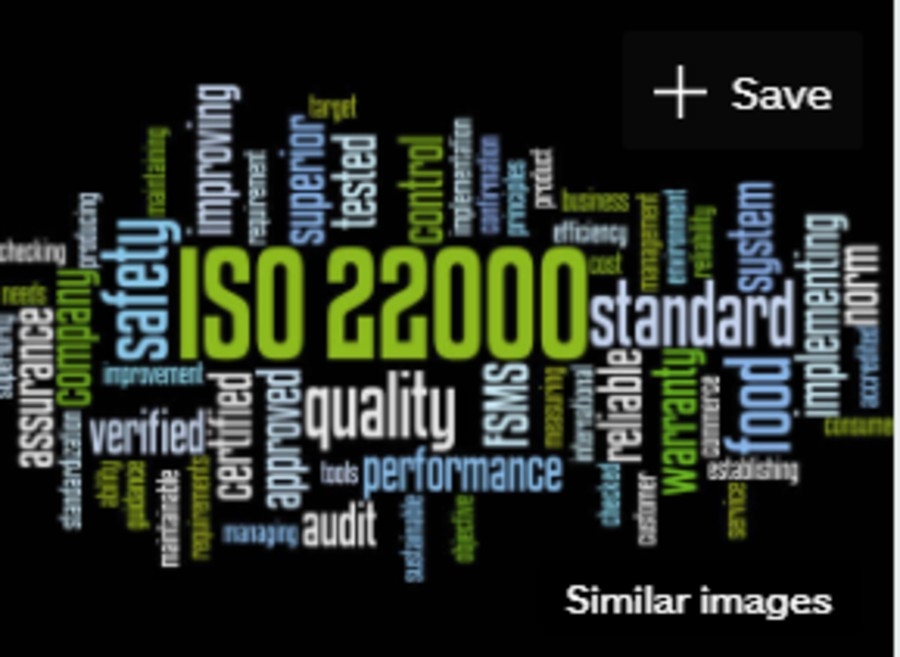## Introduction
In an era where foodborne illnesses affect millions annually and consumer trust is paramount, robust food safety management systems are essential for organizations across the food supply chain. ISO 22000, an internationally recognized standard developed by the International Organization for Standardization (ISO), provides a comprehensive framework for managing food safety risks from farm to fork. First published in 2005 and revised in 2018 to align with modern management system structures, ISO 22000 integrates principles from Hazard Analysis and Critical Control Points (HACCP), Prerequisite Programs (PRPs), and quality management systems like ISO 9001. It applies to all organizations involved in the food chain, including producers, manufacturers, distributors, and retailers, ensuring consistent safety practices worldwide.
The standard emphasizes proactive risk management, effective communication, and continuous improvement, helping businesses comply with regulations, reduce hazards, and enhance operational efficiency. Certification to ISO 22000 not only demonstrates a commitment to food safety but also opens doors to global markets by building stakeholder confidence. This article explores ISO 22000 in depth through four key subtopics: its core definition and elements, the benefits of certification, the steps required to achieve it, and the common challenges along with strategies to overcome them. By understanding these aspects, organizations can better navigate the path to safer food production and distribution.
## What is ISO 22000?
ISO 22000 is a global standard for Food Safety Management Systems (FSMS) that outlines requirements for organizations in the food supply chain to identify, prevent, and control food safety hazards. It defines an FSMS as a set of interrelated elements that establish policies, objectives, and processes to achieve food safety outcomes, applicable to entities from primary producers to end consumers. The standard's history traces back to its initial release in 2005, drawing from Codex Alimentarius guidelines and HACCP principles to harmonize food safety practices internationally. The 2018 revision adopted the High-Level Structure (Annex SL), making it compatible with other ISO standards like ISO 9001 for quality and ISO 14001 for environmental management.
Key elements of ISO 22000 include interactive communication across the supply chain, system management with thorough documentation, and PRPs to maintain a hygienic environment—such as pest control, equipment maintenance, and cross-contamination prevention. It incorporates seven HACCP principles for hazard analysis and control, plus management principles like leadership, customer focus, and evidence-based decision-making. The standard follows the Plan-Do-Check-Act (PDCA) cycle for continuous improvement, structured into 10 clauses covering scope, context, leadership, planning, support, operation, performance evaluation, and improvement.
Compared to other standards, ISO 22000 is broader than FSSC 22000, which adds GFSI-recognized requirements but limits scope. It complements ISO 9001 by focusing specifically on food safety while integrating quality elements, and aligns with regulatory frameworks like those from the Codex Alimentarius Commission, facilitating compliance and reducing foodborne risks globally. This makes ISO 22000 a versatile tool for fostering transparency and efficiency in diverse food industry sectors.
## Benefits of ISO 22000 Certification
Achieving ISO 22000 certification yields numerous advantages, primarily by strengthening an organization's ability to manage food safety risks and improve overall performance. One key benefit is enhanced food safety, as the standard promotes a systematic approach to identifying and mitigating hazards, reducing incidents of foodborne illnesses, product recalls, and contamination. This proactive risk management not only protects consumers but also minimizes operational disruptions and associated costs.
Certification boosts market credibility and competitiveness. By demonstrating compliance with international standards, organizations gain trust from customers, regulators, and stakeholders, leading to increased customer satisfaction and loyalty. It opens doors to new business opportunities, such as partnerships with global retailers and entry into export markets where ISO 22000 is often a prerequisite. Additionally, it fosters better communication along the supply chain, ensuring all parties—from suppliers to distributors—are aligned on safety protocols, which enhances traceability and transparency.
Operational efficiencies are another significant gain. Implementing ISO 22000 reduces waste, optimizes workflows, and lowers costs through better resource allocation and preventive measures. It encourages a culture of continuous improvement, where internal audits and performance reviews drive innovation and productivity. Employees benefit from clearer roles and training, promoting engagement and a stronger food safety culture. Overall, certification aligns with broader goals like regulatory compliance and sustainability, contributing to the United Nations' Sustainable Development Goals by promoting health and zero hunger. In a competitive food industry, these benefits translate to long-term resilience and growth.
## Steps to Achieve ISO 22000 Certification
Obtaining ISO 22000 certification involves a structured process that ensures an organization's FSMS meets the standard's requirements. The journey begins with a gap analysis to assess current practices against ISO 22000 clauses, identifying areas for improvement such as documentation, hazard controls, and communication protocols. This step helps tailor the implementation to the organization's context, risks, and objectives.
Next, develop and document the FSMS. This includes establishing a food safety policy, setting measurable goals, forming a competent food safety team, and implementing PRPs and HACCP plans. Organizations must ensure resource availability, create traceability systems, and define procedures for emergencies, nonconformities, and product withdrawals. Training staff and fostering internal communication are crucial during this phase.
Implementation follows, where the FSMS is operated for at least three months to gather evidence of effectiveness. Conduct internal audits and management reviews to monitor performance and address issues. Then, engage an accredited certification body for external audits: Stage 1 reviews documentation and readiness, while Stage 2 evaluates on-site processes. Any nonconformities must be resolved promptly.
Upon successful audits, certification is granted, valid for three years with annual surveillance audits to maintain compliance. Continuous improvement through the PDCA cycle ensures the system evolves with changes in regulations or operations. This methodical approach not only achieves certification but embeds a robust food safety culture.
## Challenges in Implementing ISO 22000 and How to Overcome Them
Implementing ISO 22000 can present several hurdles, but with strategic solutions, organizations can navigate them effectively. A primary challenge is resource allocation, as the process demands significant time, money, and personnel, often straining small businesses with competing priorities. Resistance to change is another issue, where employees and management may hesitate to adopt new procedures if existing systems seem adequate. Lack of knowledge about the standard's requirements can lead to delays, while complex documentation overwhelms teams, especially in diverse food sectors with varying regulations.
Integrating ISO 22000 with other management systems, like quality or environmental standards, adds complexity, and maintaining employee engagement through training is challenging. Top management commitment may wane without clear benefits, hindering progress.
To overcome these, prioritize phased implementation, focusing on high-risk areas first to manage resources efficiently. Combat resistance by communicating long-term advantages, such as cost savings and market access, and involving staff in planning. Provide comprehensive training, including ISO 22000 Lead Auditor courses, to build knowledge and engagement. Streamline documentation by aligning it with existing processes and using digital tools. Foster management buy-in through aligned objectives and regular reviews. By addressing these proactively, organizations can achieve successful implementation and reap the standard's rewards.
## Conclusion
ISO 22000 certification stands as a cornerstone for food safety in today's interconnected global supply chain, offering a structured approach to risk management and quality assurance. Through its key elements like HACCP, PRPs, and the PDCA cycle, it empowers organizations to prevent hazards, ensure compliance, and drive continuous improvement. The benefits—ranging from enhanced customer trust and operational efficiency to expanded market opportunities—far outweigh the implementation challenges, which can be mitigated with proper planning, training, and leadership commitment.
As food safety concerns escalate with globalization and climate impacts, adopting ISO 22000 is not just a regulatory necessity but a strategic imperative for sustainable success. Organizations that invest in this standard contribute to broader societal goals, reducing foodborne risks and promoting health worldwide. Ultimately, ISO 22000 certification fosters resilience, innovation, and confidence, ensuring safer food for all.






